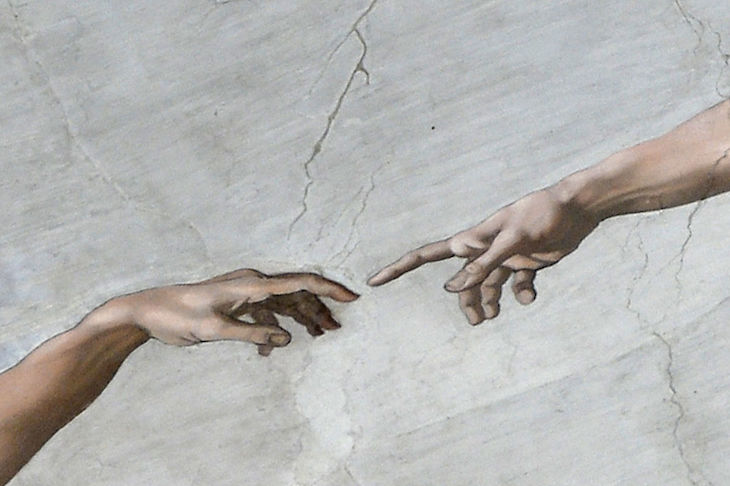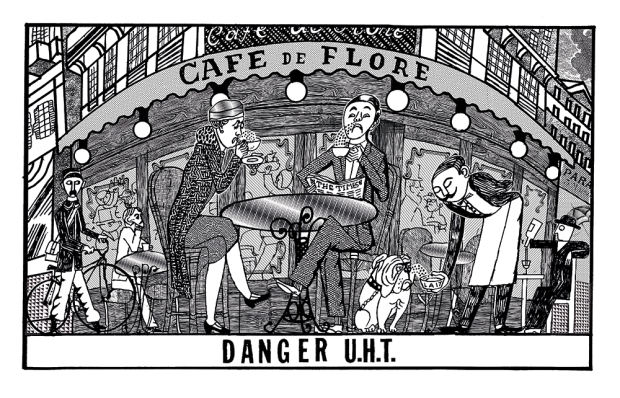Our family holiday snaps used to be slides. We’d gather in the sitting room while Dad clicked through each one. He and my mother are archaeologists, so the pictures were short on people and long on fortifications.
These days we tourists take so many photographs that a slide show would take all day. We record everything. The slightest thing. That promising first glass in the airport departure lounge; the entertainingly bungled English on the local restaurant menu (lol); our toes burrowing happily into smooth beach pebbles.
I went mad for the tiles on a recent Portugal trip, photographing hundreds, eager not to miss an even prettier patterned frontage. They were so lovely, so pleasing. But what will I do with all the pictures?
Thank goodness we now keep most of our memories digitally and display them on Facebook or Instagram rather than printing them out for a vast album or supersizing our mantelpieces. My tile highlights are floating somewhere among the other million or so #tile and over 100,000 #ihavethisthingwithtiles. But forever looking at a screen or through a lens, are we missing something?
The Revd Charlotte Bannister-Parker, associate priest at the University Church of St Mary the Virgin in Oxford, suggests so. Her editorial in the church newsletter went national last week when it highlighted the problem of tourists ruining the peace of her church as they bustle through, clicking away with their cameras, iPads and phones.
‘I have been overwhelmed by the number of tourists coming through the church and the fact that so many of them seem unaware that this is a sacred space,’ she wrote. ‘Not only is the whole experience of visiting St Mary’s so often seen through a camera lens, but also some visitors seem completely unaware of the difference between this space as the House of God and, say, that of the Sheldonian Theatre.’
The problem is not limited to excessive photo-taking. It is to do with lack of awareness, looking but not seeing, simply ticking things off on the tourist trail and moving on. Snap. Done. Next. It’s tricky to give your full attention to the surroundings when you’re concentrating on getting the right shot of the leaf spandrels or thinking up an entertaining hashtag. St Mary’s welcomes 400,000 visitors a year and it is always challenging to calm large groups, especially on a damp day when everyone’s rustling around in raincoats.
Inside the Taj Mahal, beneath which Mumtaz Mahal and Shah Jahan are entombed, it’s a hullaballoo of whistle blowing security guards, guides whispering loudly about the purity of the fire stones and tourists jostling for position. In such conditions it’s impossible to sense much of its spiritual significance. You have to get up before sunrise and park yourself across the river in the Mughal park, Mehtab Bagh, for that.
For this reason the Revd Dr William Lamb, vicar of the University Church, is wise to moot limiting the number of people in each tour group and reserving certain areas for private prayer.
There is no suggestion that the use of cameras should be banned. But sometimes such a ban comes as a relief. It’s an opportunity to look closer and contemplate without reaching for your phone and breaking the spell.
We are not permitted to take any pictures of Michelangelo’s Sistine Chapel ceiling in Rome, nor the State Rooms at Buckingham Palace, nor inside the tumultuous Taj Mahal.
Staring at the Sistine ceiling is such a treat — a quick pic taken in the relative gloom of the chapel is not going to do it justice. And a ceiling selfie would gaze right up your nose. Plus, as the Revd Charlotte says, not feeling the need to mark the event puts paid to the notion that ‘if you don’t take a photo, it did not happen’. We’re so used to sharing our lives on social media that we no longer need to commit them to memory. Insta-gram is a quick and easy ‘dear diary’ entry of what we’re up to, even if that’s just eating a plate of spaghetti.
There is no denying that it’s brilliantly addictive (I use it all the time), especially for travellers, with its wealth of ideas on what you might like to eat, see or do. And sharing beautiful sights, enviable interiors and cheering dogs can be enriching.
Chris Ofili was open to his vivid tapestry, ‘Weaving Magic’, now on display in the National Gallery being photographed and shared. That will bring new visitors through the doors, which is undeniably a good thing.
But the National Gallery is careful to maintain a balance. Photography of
its works has been allowed since 2014, but selfie sticks (along with tripods) are out. The museum wants to maintain the ‘overall visitor experience’. And we all know that selfie sticks are a menace, getting in the way of what we’ve come to see.
Capturing special occasions is a different thing and a — rightly — well-loved tradition. Think of all those tight-lipped Victorian family groups where the sitters waited, straight-faced, for the camera shutter. But we’ve gone overboard there too, to the point of being intrusive.
The vicar who married my sister in June suggested that she ask the congregation not to upload photos of the bride and groom to social media before they’d even left the church. They declined her offer, but raised an eyebrow that it needed to be made.
I’ve been to weddings where guests film the entire ceremony on their mobiles. Will they watch that footage after the event? Is that better than engaging wholeheartedly with the real thing?
As with spectacularly staged concerts,
the answer surely has to be no. It must be pretty dismaying for performers or newlyweds to stare out at a sea of nodding, winking iPhones instead of faces.
The singer Adele was moved to tell fans to put their phones away and concentrate on just enjoying the show. ‘I’m really here in real life,’ she said, and good for her. Live for the moment.
Got something to add? Join the discussion and comment below.
Get 10 issues for just $10
Subscribe to The Spectator Australia today for the next 10 magazine issues, plus full online access, for just $10.
You might disagree with half of it, but you’ll enjoy reading all of it. Try your first month for free, then just $2 a week for the remainder of your first year.














Comments
Don't miss out
Join the conversation with other Spectator Australia readers. Subscribe to leave a comment.
SUBSCRIBEAlready a subscriber? Log in